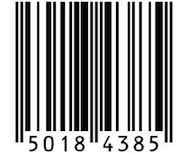
That is the conclusion of TWO separate reports issued in the past 24 hours, one from the Bank of England and the other from the US Federal Reserve.
The crisis is looming because Western banks have quietly expanded their lending in the less regulated Asian markets. And regulatory changes brought in amidst intense lobbying by the banks themselves, have made matters WORSE, by blurring the lines of oversight.
Six years after the crash, the financial system is no nearer to a transparent system whereby every transaction between banks can be traced and tracked, so that a dollar which goes into Citibank in New York, and then re-emerges out of the Caymans into UBS Zurich can be identified.
Scandalous but hardly surprising.
The problem for regulators is that so much has been done to overhaul banking and financial regulation since the collapse of Lehman Brothers in 2008 that knowing how the system would now respond in a crisis is impossible.
Contingent convertible debt, bail-in bonds, enhanced liquidity buffers, ring-fencing, subsidiarisation, counter-cyclical capital buffers, the list of reforms is endless and how it will all work when the worst happens, no one knows. The G20 called for the establishment of a Global Legal Entity Identifier System (GLEIS). It is critical to monitoring of systemic risk. But the banks do not want to pay for it.
Yesterday, the Bank of England’s Financial Policy Committee released a statement from its latest meeting https://www.bankofengland.co.uk/publications/Pages/news/2014/025.aspx in which it warned in deliberately obscure language that “changes to the structure and functioning of markets as banks adapted business models” meant it had become more difficult to assess the impact of “unexpected developments from any source”..
Friday night, the US Federal Reserve published its annual bank capital plan https://www.federalreserve.gov/newsevents/press/bcreg/20140326a.htm review that saw the North American businesses of Citigroup, HSBC, RBS, and Santander all rejected for what it said were “qualitative concerns”.
These banks are the most heavily exposed to Asian lending.
But nobody knowns much about the exposure, how heavy and to whom. That is why the idea of a financial bar code is so badly needed.
It would require full global acceptance to meet last Wednesday’s warning from Moody’s about the Hong Kong subsidiaries of China’s largest banks, https://www.telegraph.co.uk/finance/newsbysector/banksandfinance/10722032/Moodys-warns-of-Hong-Kong-risk-to-Chinese-banks.html which the ratings agency says have played a big part in facilitating the offshoring of Chinese credit risk.
The financial bar code was supposed to have been put in place by 2013, but it is as far away as ever (see https://www.swiftinstitute.org/wp-content/uploads/2013/03/2013-02-The-Rise-and-Success-of-the-BarCode-v4-1-Milne.pdf page 10)
The apparent conclusion we have to draw is that the financial system will NOT be adequately reformed because it is not in the interests of the banks and their biggest customers.
So the bankers will go on drawing their bonuses and we had better go on preparing for the inevitable collapse.